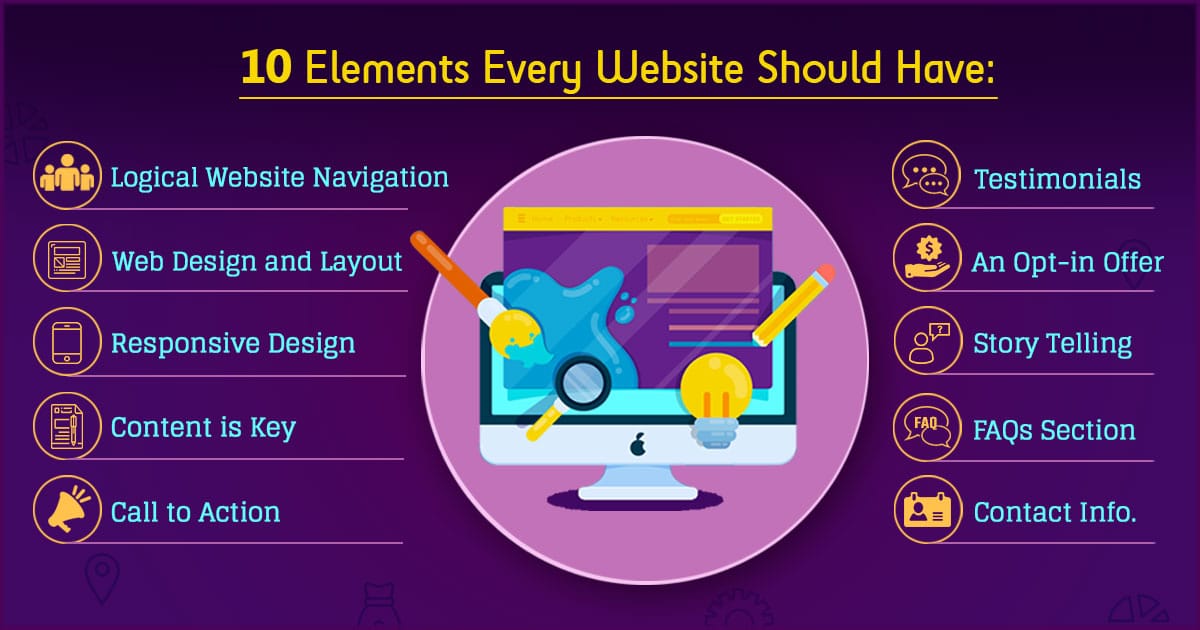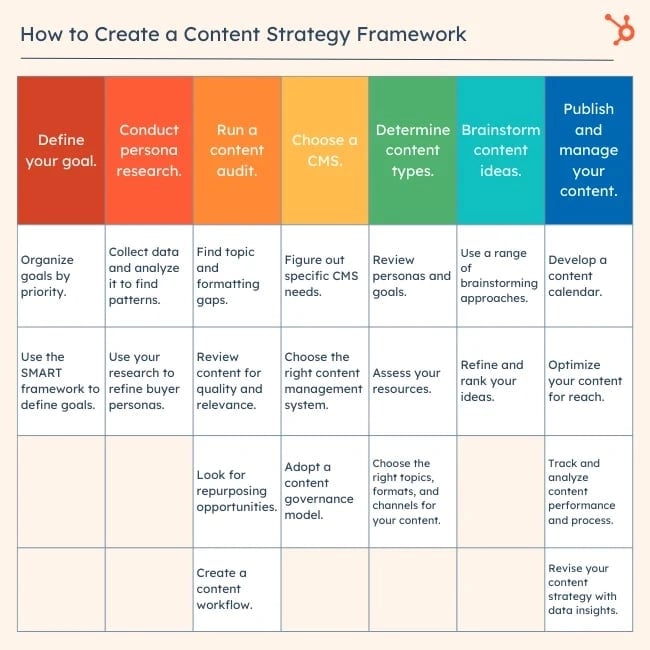
Digital marketing is the process of promoting your products or services online using various channels and platforms. It’s an essential part of any business strategy, especially for startups that want to grow and succeed in today’s competitive landscape. Read on to learn why digital marketing is important for startups.
Startups face many challenges, such as limited resources, budget constraints, lack of brand awareness, and high customer acquisition costs. These challenges can make it difficult for them to reach their target audience, generate leads, and convert them into loyal customers.
Digital Marketing for Startups: Maximizing Potential
However, online marketing can be a solution to overcome these challenges and achieve goals. Implementing effective strategies on ‘how to do digital marketing for startups’ involves setting clear objectives, establishing key performance indicators, and regularly monitoring and evaluating campaign performance for optimization. If it’s done correctly, it helps startups to:
- Increase their visibility and reach online
- Build trust and credibility with their audience
- Communicate their unique value proposition and brand message
- Educate and inform their potential customers
- Engage and interact with their existing customers
- Drive traffic to their website and landing pages
- Generate leads and nurture them through the sales funnel
- Increase conversions and sales
- Retain and delight their customers
- Measure and optimize their performance
A well-executed digital marketing strategy for startups can help establish brand authority, generate leads, and foster long-term customer relationships in a competitive market.

Understanding Your Audience with Buyer Personas
The first step in any digital marketing plan for startup is to understand your audience. Who are they? What are their needs, goals, challenges, and pain points? How do they search for information, solutions, and products online? What are their preferences, behaviors, and motivations?
To answer these questions, create detailed buyer personas for your ideal customers. Buyer personas are fictional representations of your target audience based on accurate data and research. They help to guide all your digital marketing efforts and tailor them to your audience’s needs and expectations.

Conduct market research and collect data from various sources. Focus on the following things.
1. Your existing customers
Engage with your existing customers to gather valuable insights. Conduct interviews, and surveys, or analyze their feedback and reviews to better understand their needs and preferences.
2. Your website and social media analytics
Leverage website and social media analytics tools such as Google Analytics and Facebook Insights to gain valuable insights into your audience. Track and measure demographic information, interests, behaviors, and actions to better understand your target market and tailor your strategies accordingly.
3. Your competitors and industry trends
Research your competitors’ websites, social media profiles, and content to identify their target audience, strengths, and weaknesses. Also, follow industry news, blogs, podcasts, and forums to stay updated on the latest trends and insights.
Once you have gathered enough data, you can use it to create buyer personas that include the following information:
- Name and photo: Give your persona a name and a photo to make it more realistic and human.
- Demographic details: Include age, gender, location, income, education, and occupation.
- Psychographic information: Goals, challenges, pain points, motivations, values, and fears.
- Online behavior: Preferred channels, platforms, devices, sources of information, and search terms.
- Buying journey: Include the stages of awareness, consideration, and decision, and the triggers, criteria, and objections for each stage.
Building a Solid Digital Foundation
The next step in digital marketing for startups is creating a well-designed, responsive, and user-friendly website.
Your website is the first impression your potential customers will have of your startup. It’s where they will learn more about your products or services, value proposition, brand message, and credibility. It’s also where they will take action, such as signing up for a free trial, requesting a demo, or making a purchase.
Therefore, your website needs to be
1. Visually appealing
Choose a clean, modern, professional design that reflects your brand identity and personality. It should also include high-quality images, videos, and graphics that capture your audience’s attention and interest.
2. Responsive
Your website should adapt to different screen sizes and devices, such as desktops, laptops, tablets, and smartphones. It should also load fast and have smooth navigation and functionality.
3. User-friendly
Make it easy for your visitors to use and navigate. It should have a clear and intuitive layout, structure, hierarchy, and clear and compelling copy that communicates your value proposition, benefits, and features.
4. SEO-friendly
Optimize your website for search engines like Google and Bing. It should have relevant keywords, meta tags, headings, URLs, a sitemap, robots.txt, and schema markup.
5. Conversion-focused
Your website should have clear and prominent calls to action (CTAs) that guide visitors to the next step in their buying journey. It should also have landing pages, forms, and pop-ups that capture your visitors’ contact information and generate leads.

Content Marketing Strategy
Content marketing is creating and distributing valuable, relevant, and engaging content to attract, educate, and influence your target audience. To create a successful content marketing strategy, you need to:
1. Define your goals and objectives
What do you want to achieve with your content marketing? How will you measure your success? What are the key performance indicators (KPIs) you will track and analyze?
2. Identify your audience and their needs
Who are your buyer personas? What are their needs, goals, challenges, and pain points? How can you help them with your content? What type of content do they prefer and consume?
3. Conduct a content audit and gap analysis
What content do you already have? What content is performing well, and what is not? What content is missing or needs improvement? How can you fill the gaps and optimize your existing content?
4. Create a content calendar and plan
What content will you create? How often will you create and publish it? What channels and platforms will you use to distribute it? Who will be responsible for creating, editing, and managing it?
5. Create and publish high-quality content
How will you ensure your content is valuable, relevant, and engaging for your audience? How will you ensure your content is consistent with your brand voice and tone? How will you ensure your content is SEO-friendly and optimized for conversions?
6. Promote and amplify your content
How will you reach and attract your target audience with your content? How will you boost your content using social media, email marketing, paid advertising, and other channels? How will you encourage your audience to share and recommend your content?
7. Measure and analyze your performance
How will you track and measure the results of your content marketing efforts? What tools and metrics will you use to monitor and evaluate your performance? How will you adjust and improve your strategy based on your findings?

Some examples of content types you can create for your startup are:
- Blog posts: Blog posts are articles that provide information, insights, tips, and advice on topics related to your industry, niche, and products or services, educating your audience, showcasing expertise, and driving website traffic.
- E-books: E-books are long-form content that provides in-depth knowledge, guidance, and solutions to specific topics or problems. They can help you to generate leads, nurture them, and position your startup as a thought leader.
- Case studies demonstrate how your products or services have helped your customers achieve their goals and overcome challenges. Use them to build trust and credibility, showcase your value proposition and benefits, and increase conversions and sales.
- Webinars: Live or recorded online presentations provide valuable information, insights, and tips on topics related to your industry, niche, and products or services. They help to generate leads, educate and inform your audience, and increase engagement and interaction.
- Videos: Visual content grabs attention, communicates your message effectively, and boosts visibility, engagement, and conversions.
- Infographics: Graphical content summarizes complex data, information, and insights simply and attractively. Use it to educate and inform your audience, increase brand awareness and authority, and generate social media shares and backlinks.
- Podcasts: Audio content provides valuable information, insights, and tips on topics related to your industry, niche, and products or services. They can help you to reach and engage your audience, build trust and credibility, and showcase your personality and voice.
- Testimonials: Customer reviews build trust, showcase satisfaction, and influence purchase decisions.
Search Engine Optimization (SEO)
Search engine optimization (SEO) is improving your website’s visibility and ranking on search engines. Drive organic traffic and leads to your website by
1. Conducting keyword research
Keyword research is finding and analyzing the words and phrases your target audience uses to search for information, solutions, and products online. You can use tools like Google Keyword Planner, Moz Keyword Explorer, and SEMrush Keyword Magic Tool to find relevant, high-volume, and low-competition keywords for your website and content.
2. Optimizing your on-page elements
On-page elements are the components of your web pages that affect your SEO performance, such as title tags, meta descriptions, headings, URLs, images, and content. Optimize these elements with your target keywords, make them descriptive and compelling, and follow the best practices for SEO.
3. Building your presence in local search
Local search finds and displays local businesses based on the user’s location and intent. If your startup targets local customers, optimize your website by creating and verifying your Google My Business profile, adding your business name, address, phone number, and website to local directories and citations, and collecting and managing your online reviews.
4. Using long-tail keywords
Long-tail keywords are longer and more specific, with lower search volume but higher conversion rates. They are ideal for new websites that want to rank for niche topics and target more qualified and relevant traffic. Use tools like AnswerThePublic, Ubersuggest, and KWFinder to find long-tail keywords related to your industry, niche, and products or services.

5. Integrating your keywords into your content
Once you have your target keywords, incorporate them into your content in a natural and relevant way. Use your primary keyword in your title, introduction, conclusion, and at least one subheading. Also, use your secondary and related keywords throughout your content.
However, avoid keyword stuffing, which is the practice of using too many keywords in your content in an unnatural and spammy way.

Leveraging Social Media Marketing
Social media marketing uses platforms like Facebook, X (Twitter), Instagram, and LinkedIn to promote your products or services, connect with your audience, and grow your brand. Here’s how to create a successful social media marketing strategy:
1. Select the right social media platforms
Use only the ones your target audience uses and prefers. Research your audience’s demographics, interests, behaviors, and preferences, and choose the platforms that match them.
For example, if your target audience is young and creative, you might want to use Instagram and TikTok. If your target audience is professional and B2B, you might want to use LinkedIn and Twitter.
2. Create and optimize your social media profiles
Add your business name, logo, bio, website, and contact information. Ensure your profiles are consistent with your brand identity and personality and reflect your value proposition and brand message.
3. Create and share engaging content
Focus on valuable, relevant, and engaging content for your audience. Use various content types, such as images, videos, stories, polls, quizzes, and live streams, and a mix of content formats, such as educational, informational, inspirational, entertaining, and promotional.
Follow the 80/20 rule, which means that 80% of your content should be non-promotional, and 20% should be promotional.

4. Manage and grow your community
Respond to social media comments, messages, and mentions, answer questions, provide feedback, and resolve issues. Grow your community by following, liking, commenting, and sharing other relevant accounts, joining and participating in groups and chats, and collaborating and partnering with influencers and advocates.
5. Utilize paid social media advertising
Ads will help you reach and attract more people to your social media profiles and website. Use tools like Facebook Ads Manager, Twitter Ads, and LinkedIn Campaign Manager to create and run ads on various social media platforms. Target your ads based on your audience’s demographics, interests, behaviors, and actions.
You can also create a funnel on Facebook to guide your audience from awareness to conversion, using different types of ads, such as video ads, carousel ads, and lead ads.
Email Marketing from the Start
Use emails to communicate with your audience, promote your products or services, and grow your business. To create a successful email marketing strategy, use the best digital marketing tools for startups and follow these steps:
1. Build an email list
A list should consist of people interested in your products or services who have permitted you to contact them. Offer something valuable and relevant to your audience, such as a free e-book, a webinar, a coupon, or a trial. Use tools like Mailchimp, ConvertKit, and AWeber to create and manage your email list and campaigns.
2. Create personalized email campaigns
Emails should cater to your audience’s needs, preferences, and behaviors. Segment your email list based on various criteria, such as demographics, interests, actions, and stages in the buying journey. Automate your email campaigns based on triggers like sign-ups, purchases, and birthdays.
3. Write compelling email copy
It should capture your audience’s attention and interest and persuade them to take action. Use a catchy subject line, a clear and concise body, and a solid and prominent call to action. Also, address your audience by name in a friendly and conversational tone.
4. Optimize your email design and deliverability
Ensure your emails look good and reach your audience’s inbox. Use a responsive, attractive email template that adapts to different screen sizes and devices. Follow the best practices for email deliverability, such as avoiding spam words, using a reputable sender name and address, and testing your emails before sending them.

Email marketing helps you build a loyal and engaged customer base and increase conversions and sales. However, it requires constant testing, analysis, improvement, and compliance with email marketing laws and regulations, such as the CAN-SPAM Act and the GDPR.
Paid Advertising: Google and Facebook Ads
Paid advertising uses paid online platforms like Google and Facebook to display your ads to your target audience. To create a successful paid advertising strategy, you need to:
1. Set your goals and budget
Set your goals and objectives for your paid advertising campaigns, such as increasing traffic, leads, or sales. Also, set your budget and allocate it to your campaigns based on your priorities and expected return on investment (ROI).
2. Choose platforms and networks
It’s important to select ones that suit your goals, budget, and audience. The most popular and effective platforms and networks for startups are Google Ads and Facebook Ads. Google Ads allows you to display your ads on Google’s search engine results pages (SERPs) and other websites that are part of Google’s network.
Facebook Ads allows you to display your ads on Facebook’s news feed, stories, messenger, and other apps and websites that are part of Facebook’s network.

3. Create and optimize your ads
Make them fit your target keywords, audience, and goals. Use a catchy headline, a clear and concise description, and a strong and prominent call to action. Also, use a relevant and attractive image or video that showcases your products or services and follow the best practices and guidelines for each platform and network, such as the character limits, image sizes, and ad formats.
4. Set your ads' targeting and bidding options
Make it based on your audience’s demographics, interests, behaviors, and actions. Then, set your bidding strategy and budget based on your goals and objectives, such as cost per click (CPC), cost per thousand impressions (CPM), or cost per action (CPA).
5. Track and measure your performance
Track and measure the results of your paid advertising campaigns using tools like Google Ads Conversion Tracking, Facebook Pixel, and Google Analytics. Monitor and evaluate your key metrics, such as impressions, clicks, conversions, and ROI. Test and experiment with different ad variations, such as headlines, descriptions, images, and CTAs, to see what works best for your audience and brand.
Retargeting Campaigns
Retargeting means displaying your ads to people who have already visited your website or interacted with your products or services but have not converted yet. When done well, it increases your conversions and sales.

1. Install a tracking code or pixel
Add them on your website and landing pages to collect and store visitors' data, such as their IP address, device, browser, and actions. You can use tools like Google Ads Remarketing Tag, Facebook Pixel, and AdRoll Pixel to create and install your tracking code or pixel.
2. Create and segment your audience
Do this based on their characteristics and behaviors, such as demographics, interests, actions, and stages in the buying journey. Use tools like Google Ads Audience Manager, Facebook Custom Audiences, and AdRoll Audiences to create and segment your audience.
3. Create and optimize your ads
Keep your target audience and goals in mind. Use a catchy headline, a clear and concise description, and a solid and prominent call to action. Add a relevant and attractive image or video showcasing your products or services, and follow the best practices and guidelines for each platform and network, such as character limits, image sizes, and ad formats.
4. Set your targeting and bidding
Set them for your ads based on your audience’s characteristics and behaviors. Use tools like Google Ads Audience Network, Facebook Audience Network, and AdRoll Network to display your ads on various websites and apps that are part of the network.
Set your bidding strategy and budget based on your goals and objectives, such as cost per click (CPC), cost per thousand impressions (CPM), or cost per action (CPA).
5. Track and measure your performance
Measure retargeting campaign results with tools like Google Ads Conversion Tracking, Facebook Pixel, and AdRoll Conversion Tracking. Monitor key metrics like impressions, clicks, conversions, and ROI. Experiment with ad variations—headlines, descriptions, images, and CTAs—to optimize performance for your audience and brand.
Investing in SEO for Long-Term Growth
Investing in SEO for long-term growth will help you improve your online visibility and ranking and drive more organic traffic and leads to your website. However, SEO is not a quick fix; it’s a continuous process that requires patience, persistence, and improvement.

1. Optimize your off-page elements
Off-page elements are the components of your web pages that affect your SEO performance but are not controlled by you, such as backlinks, social signals, and online reviews. Optimize these elements by building quality backlinks, enhancing social media presence, and managing online reviews effectively.
2. Create and update your content
Create and edit your content regularly to keep your audience and search engines interested and satisfied. Do this based on your audience’s needs, preferences, and feedback, and follow the best practices for SEO-friendly content, such as using keywords, headings, images, and links.
3. Stay updated on the latest trends and best practices
SEO is an ever-changing field, and you need to stay updated on the latest trends and best practices to maintain and improve your SEO performance. Follow the latest algorithm updates, guidelines, and recommendations from search engines. It’s also good to follow the latest news, blogs, podcasts, and forums from SEO experts and influencers, such as Moz, Search Engine Journal, and Neil Patel.
Measuring and Analyzing Performance
The last step in your digital marketing plan is to measure and analyze your performance, which will help you understand your digital marketing performance and ROI and make data-driven decisions to optimize and enhance your results.

1. Use relevant and reliable tools and metrics
Keep an eye on your digital marketing efforts using tools like Google Analytics, Google Search Console, Facebook Insights, and Mailchimp Reports. Analyze metrics like traffic, bounce rate, conversion rate, cost per lead, and customer lifetime value to evaluate your performance.
2. Set up and monitor your dashboard
It helps display your key performance indicators (KPIs) and goals. You can use tools such as Google Data Studio, Tableau, and Dasheroo to create and customize your dashboard. Tools like Google Alerts, Mention, and Hootsuite can help you monitor your online reputation and feedback.
3. Conduct regular audits and tests
Use Screaming Frog, Moz, and SEMrush to audit your website and SEO performance and see what marketing activities need to be improved. You can also use tools like Google Optimize, Optimizely, and VWO to test your website and landing page performance.
Tailoring Digital Marketing for Startups' Growth
Navigating the complexities of digital marketing for startups demands creativity, agility, and a deep understanding of the target audience. Understanding how digital marketing helps startups traverse the competitive landscape is crucial for establishing a strong online presence and driving growth.
However, digital marketing is not a one-size-fits-all solution but a customized and tailored strategy that depends on your startup’s goals, objectives, audience, budget, and industry. You need to create and implement a comprehensive and effective plan that covers the following steps and strategies:
- Understanding your audience with buyer personas
- Building a solid digital foundation
- Content marketing strategy
- Search engine optimization (SEO)
- Leveraging social media marketing
- Email marketing from the start
- Paid advertising: Google and Facebook Ads
- Retargeting campaigns
- Investing in SEO for long-term growth
- Measuring and analyzing performance
Following these steps and strategies, you can leverage digital marketing to boost your startup’s growth and achieve your objectives. Consistently staying updated with the latest digital marketing tips for startups ensures that businesses remain competitive and adaptive in ever-evolving online landscapes.




